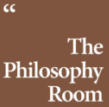Theory of Planned Behavior
1) Icek Ajzen and TPB
Icek Ajzen, a renowned psychologist and researcher in the field of social psychology, is best known for developing the theory of planned behavior (TPB). The TPB is a theoretical framework that helps us understand and predict human behavior, particularly in areas such as health behaviors, environmental behaviors, and consumer behaviors.
Ajzen developed the TPB by building on his earlier work on the theory of reasoned action (TRA), which proposed that attitudes, subjective norms, and behavioral intentions were the main determinants of behavior. However, he realized that the TRA did not fully capture the role of perceived behavioral control in predicting and understanding behavior.
Perceived behavioral control refers to an individual’s belief in their ability to perform a particular behavior. Ajzen believed that an individual’s perceived behavioral control can influence their intentions and behavior. For instance, an individual who believes that they have little control over their ability to exercise regularly may have lower intentions to exercise and may be less likely to engage in this behavior.
The TPB incorporates perceived behavioral control into the TRA framework by proposing that an individual’s behavioral intentions are influenced by three factors: attitudes toward the behavior, subjective norms, and perceived behavioral control. Attitudes refer to an individual’s positive or negative evaluation of the behavior, while subjective norms refer to an individual’s perception of social pressure to engage in or avoid the behavior.
The TPB has been extensively applied to a wide range of behaviors, including health behaviors such as smoking cessation, dietary behaviors, and exercise, environmental behaviors such as recycling and energy conservation, and consumer behaviors such as purchasing decisions. The TPB has also been used to develop interventions aimed at behavior change.
For instance, an intervention to increase physical activity may target an individual’s attitudes toward exercise, social norms surrounding physical activity, and their perceived control over their ability to exercise. By addressing these factors, the intervention may be more effective in promoting behavior change.
Ajzen’s work on the TPB has had a significant impact on our understanding of human behavior and has practical implications for developing interventions to promote behavior change. Moreover, his research on the measurement of attitudes and subjective norms and the role of affect in behavior has furthered our understanding of social psychology.
In addition to the TPB, Ajzen has made other important contributions to the field of social psychology. He has conducted research on the measurement of attitudes and subjective norms, as well as on the role of affect in behavior. His work has been influential in shaping the field of social psychology and has had practical implications for the development of interventions to promote behavior change.
2) Normative Belief and Subjective Norms
In the theory of planned behavior (TPB), normative beliefs and subjective norms are key components that help us understand and predict human behavior. Normative beliefs refer to an individual’s beliefs about the expectations of significant others regarding a particular behavior. Subjective norms, on the other hand, refer to an individual’s perception of social pressure to engage in or avoid a particular behavior. Normative beliefs and subjective norms play an important role in shaping an individual’s behavioral intentions and ultimately their behavior.
Subjective norms are an important aspect of TPB as they provide insight into how an individual perceives the social pressure to engage in or avoid a particular behavior. These norms are typically based on the beliefs of significant others, such as family, friends, and colleagues, and can be positive or negative. Positive norms can encourage an individual to engage in a behavior, while negative norms can discourage them from doing so.
Normative beliefs are a crucial component of subjective norms as they provide insight into an individual’s perception of the expectations of significant others regarding a particular behavior. These beliefs can be influenced by a variety of factors, including cultural norms, social pressure, and personal values. Normative beliefs can be either injunctive or descriptive. Injunctive norms refer to an individual’s perception of the social pressure to engage in a behavior based on what is deemed to be acceptable or unacceptable by significant others. Descriptive norms, on the other hand, refer to an individual’s perception of the prevalence of a behavior among their social network.
Normative beliefs and subjective norms can influence an individual’s behavioral intentions and ultimately their behavior in a variety of ways. For instance, if an individual perceives that their social network expects them to engage in a particular behavior, such as recycling or donating to charity, they may be more likely to intend to engage in that behavior. Similarly, if an individual perceives that their social network disapproves of a particular behavior, such as smoking or excessive drinking, they may be less likely to intend to engage in that behavior.
The TPB has been widely applied to a range of behaviors, including health behaviors, environmental behaviors, and consumer behaviors. For example, in the context of health behaviors, subjective norms and normative beliefs can influence an individual’s intentions to engage in healthy behaviors, such as exercising regularly or eating a healthy diet. In the context of environmental behaviors, subjective norms and normative beliefs can influence an individual’s intentions to engage in sustainable behaviors, such as using public transportation or reducing energy consumption.
3) Control beliefs
Control beliefs play a crucial role in the theory of planned behavior (TPB) as they provide insight into an individual’s perceived ability to perform a particular behavior. These beliefs encompass an individual’s perception of factors that can either facilitate or impede the execution of a behavior.
In the TPB model, control beliefs are considered as perceived behavioral control, which affects both an individual’s behavioral intentions and actions. Perceived behavioral control is the belief an individual holds about their ability to carry out a behavior, despite any obstacles or challenges they may face.
Several factors can influence control beliefs, including self-efficacy, perceived resources, and situational factors. Self-efficacy is an individual’s belief in their capability to perform a particular behavior, while perceived resources are the perceived availability of resources that can help in performing the behavior. Situational factors refer to external factors that can influence an individual’s ability to perform a behavior, such as social norms or time constraints.
An understanding of control beliefs can help in designing interventions aimed at modifying behavior by addressing factors that may either facilitate or hinder the performance of a behavior. For instance, a program focused on promoting physical activity may target an individual’s control beliefs by addressing aspects like self-efficacy, perceived resources, and situational factors that may impact the individual’s ability to exercise.
4) Behavioural Intention
In the theory of planned behavior (TPB), behavioral intention is a central concept that refers to an individual’s motivation to engage in a particular behavior. Behavioral intention is influenced by three factors: attitude toward the behavior, subjective norms, and perceived behavioral control.
Attitude toward the behavior refers to an individual’s overall evaluation of the behavior, whether it is positive or negative. The more favorable the attitude toward the behavior, the stronger the behavioral intention to perform the behavior.
Together, attitude toward the behavior, subjective norms, and perceived behavioral control, shape an individual’s behavioral intention, which in turn affects their actual behavior. For example, if an individual has a positive attitude toward healthy eating, perceives that their friends and family support their decision, and feels confident in their ability to eat healthily, their behavioral intention to eat healthily will be strong, and they are more likely to actually engage in healthy eating behaviors.
5) Its Application
The theory of planned behavior (TPB) has been widely applied in various fields, including health, environmental, and social behaviors. The TPB framework has been used to understand and predict behavior change, as well as to design and evaluate interventions aimed at promoting positive behavior change.
In the health field, the TPB has been applied to study a range of behaviors, including smoking cessation, physical activity, and healthy eating. For example, the TPB has been used to examine the factors that influence an individual’s decision to quit smoking, such as attitudes toward smoking, social norms, and self-efficacy. The findings from these studies have been used to develop smoking cessation interventions that address the specific beliefs and attitudes that shape behavior.
In the environmental field, the TPB has been applied to understand and predict pro-environmental behaviors, such as recycling and energy conservation. The TPB has been used to identify the factors that influence an individual’s decision to engage in these behaviors, such as attitudes toward the environment, social norms, and perceived behavioral control. The findings from these studies have been used to develop interventions aimed at promoting pro-environmental behavior.
In the social field, the TPB has been used to understand and predict a range of behaviors, including voting, charitable donations, and volunteering. For example, the TPB has been used to examine the factors that influence an individual’s decision to donate to a charity, such as attitudes toward charitable giving, social norms, and perceived behavioral control. The findings from these studies have been used to develop interventions aimed at promoting charitable giving.
6) Criticisms
Although the theory of planned behavior (TPB) has been widely used and has contributed to a better understanding of behavior change, it has also faced criticisms.
One criticism is that the TPB focuses too much on conscious and deliberate decision-making, ignoring the role of automatic and non-conscious processes in behavior. The TPB assumes that individuals have full control over their behavior and that they make rational decisions based on their attitudes, social norms, and perceived behavioral control. However, this assumption has been challenged by research suggesting that behavior can also be driven by automatic and non-conscious processes, such as habits and environmental cues.
Another criticism is that the TPB does not take into account the social and cultural context in which behavior occurs. The TPB assumes that attitudes, social norms, and perceived behavioral control are universal and objective constructs that are independent of the social and cultural context. However, research has shown that attitudes, norms, and control beliefs can vary across different cultures and social groups, and that the social and cultural context can shape behavior.
Lastly, some critics argue that the TPB does not adequately address the complexity of behavior change. The TPB focuses on the individual-level factors that influence behavior change, but it does not take into account the broader societal and environmental factors that can shape behavior. For example, social and economic policies can have a significant impact on behavior, but they are not explicitly considered in the TPB framework.












